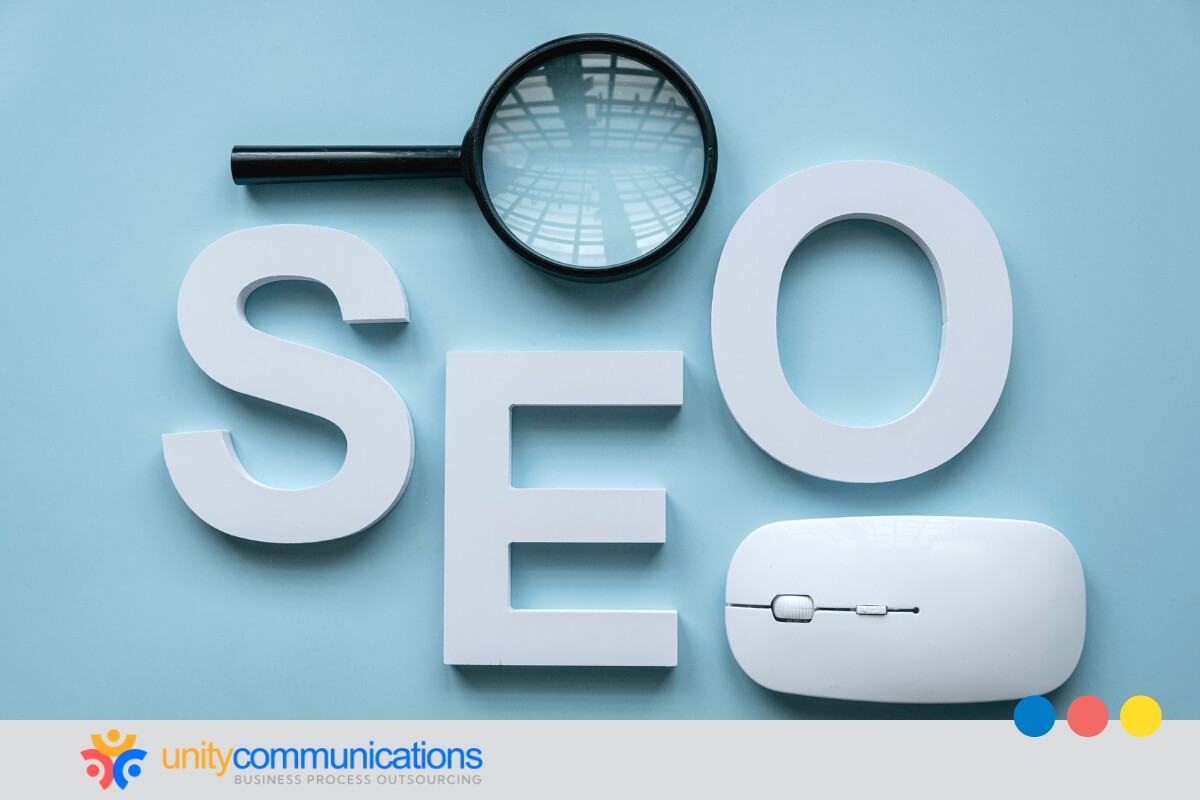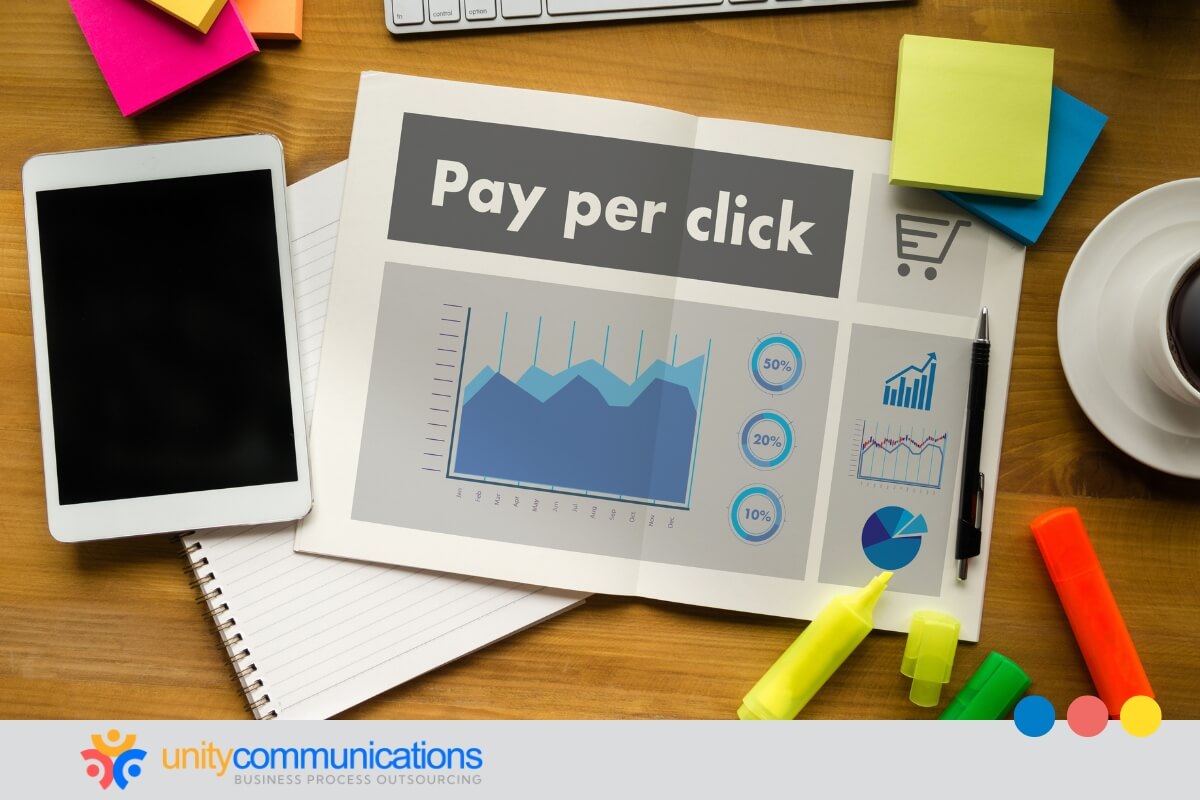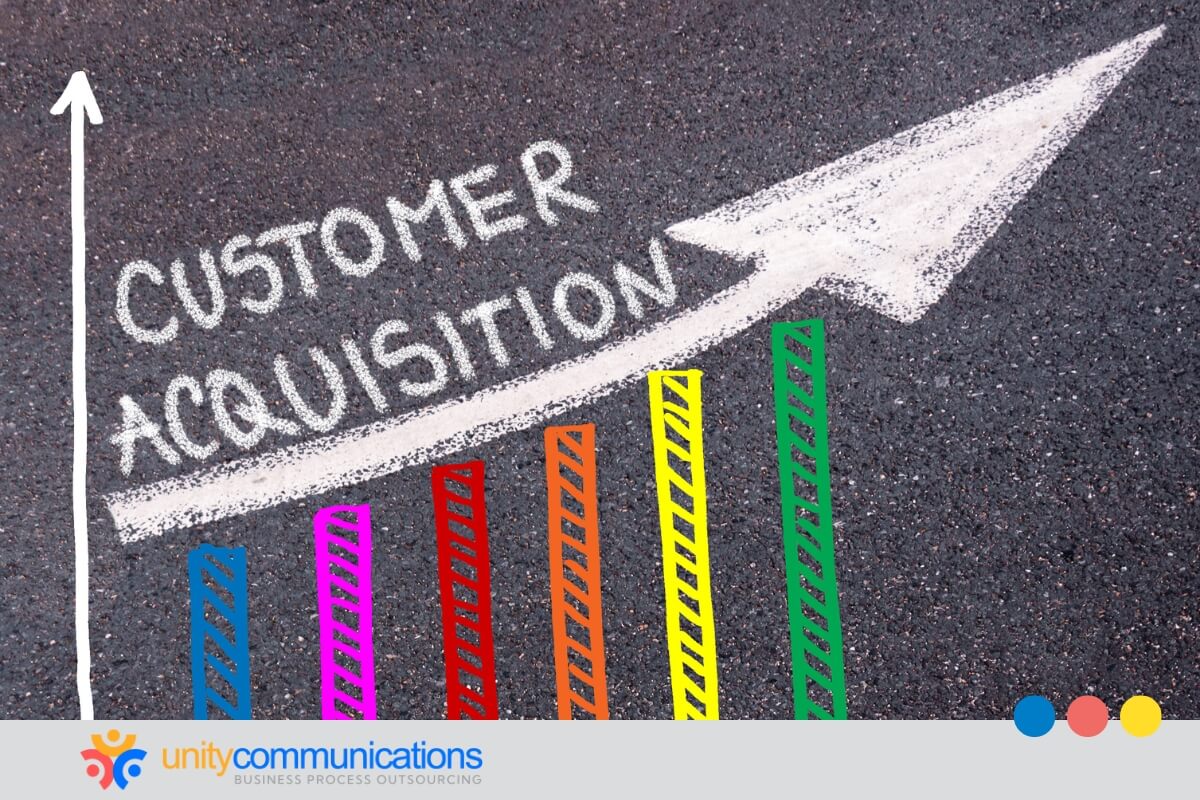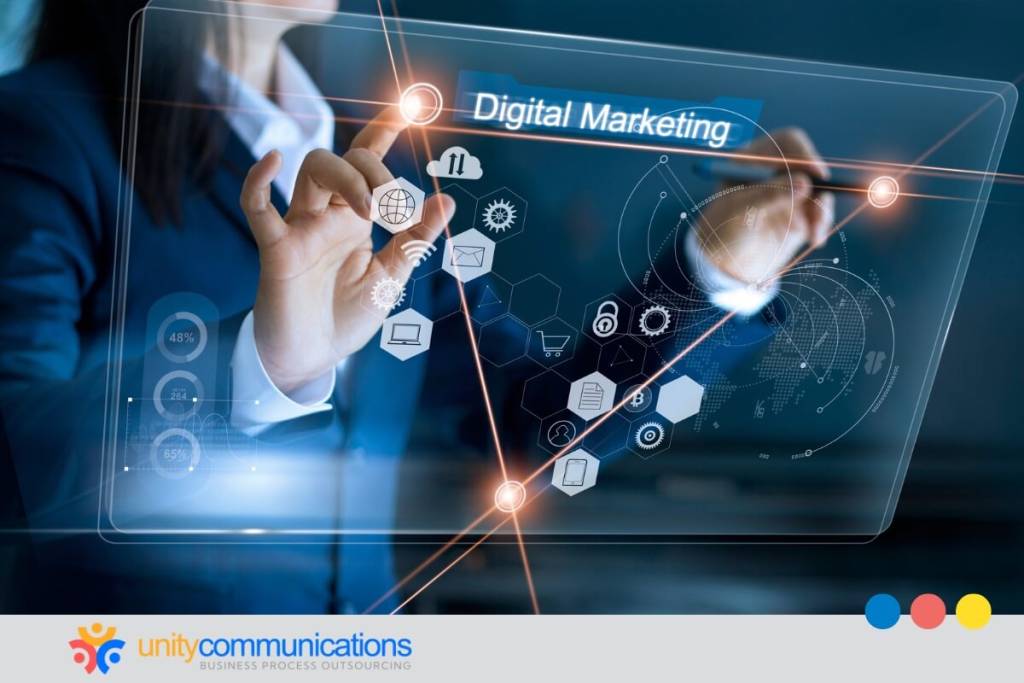Table of Contents
Sales and digital marketing are critical for attracting today’s consumers. Leveraging digital marketing services can help improve lead generation, engagement, and conversion techniques. By merging digital marketing with sales, teams can drive acquisition and revenue growth.
Additionally, outsourcing digital marketing offers cost-effective solutions, allowing your team to focus on core tasks. Discover how integrating sales, digital marketing, and outsourcing can maximize results. Continue reading!
The evolution of customer acquisition in the digital age

The digital revolution has changed the way firms approach customer acquisition. Cold calling and door-to-door sales are no longer as effective as data-driven, technology-powered initiatives. Customers today want individualized, meaningful encounters before they contact a sales professional and transact.
Businesses must combine sales and digital marketing strategies to address the needs and concerns of informed and empowered buyers. Significant developments in customer acquisition include:
- Overwhelming influence of internet research: Modern customers perform considerable online investigation before ordering or purchasing, typically using several sources such as search engines, social media, and evaluation sites.
- Preference for self-service choices: Customers now prefer to learn about offerings and services independently through interactive resources or extensive content.
- Emergence of omnichannel interactions: Shoppers interact across multiple channels, including email, social media, and mobile apps, necessitating consistent brand experiences wherever they go.
- Personalized experiences: Customers today want customized details, offers, and suggestions based on their surfing history and interests.
- Social proof: Individuals are becoming more dependent on reviews, ratings, and peer testimonials to help them make buying choices, prioritizing authenticity and reliability over traditional advertising.
- Increased usage of artificial intelligence (AI) and automation: Potential consumers nowadays communicate with chatbots, AI-powered recommendations, and automated services, seeking prompt, specific answers that do not require human participation.
Blending digital marketing and sales for unified strategies
Sales and digital marketing teams can transform lead engagement and conversion by exchanging insights and aligning goals for a cohesive strategy that appeals to tech-savvy buyers. Encouraging collaboration helps you harness the full power of both teams, driving customer acquisition and growth.
Examine the benefits of aligned sales and marketing teams for cohesive strategies:
- Enhanced lead qualifications: Digital marketing solutions, such as customer relationship management (CRM) systems, provide sales teams with information about their prospects’ online activities to prioritize high-potential leads.
- Simplified communication: Transparent coordination means that messaging from digital efforts is consistent with sales outreach, reducing prospect misunderstanding.
- Better customer journey monitoring: By collaborating, teams can follow and optimize the entire buyer journey, from awareness to conversion.
- Faster response times: Real-time information sharing enables sales professionals to reply more quickly, increasing engagement and lowering the risk of losing prospects.
- Consistent brand messaging: Collaboration builds a unified voice across channels, increasing awareness by allowing prospects to perceive a consistent message.
Best practices for alignment include:
- Regular meetings to share data and updates between teams
- Joint development of buyer personas to guide campaign strategies
- Mutual access to analytics platforms for real-time performance tracking
- Cross-team training improves collaboration between the teams
- Clear role definitions help both teams enhance their strengths and campaign execution
Digital channels for customer acquisition

Modern customer acquisition methods rely heavily on digital channels, which provide different ways to engage and convert prospects. Each channel offers distinct benefits that improve sales efforts when used effectively.
Social media for lead generation
Social networks enable your team to connect with potential customers through:
- Audience targeting: Facebook, LinkedIn, and related platforms enable exact targeting per demographics, interests, and behaviors.
- Engagement opportunities: Posting valuable and interactive content can make your products or services more trustworthy.
- Lead collection tools: LinkedIn Lead Gen Forms and similar features simplify capturing contact information directly from users.
Search engine optimization (SEO) to increase visibility
SEO drives organic traffic to websites and improves search engine rankings via:
- Keyword research: Optimizing content for words or phrases customers frequently seek helps draw qualified leads.
- Local SEO: Emphasizing geographically relevant keywords can make your website more visible among nearby prospects.
- Technical optimization: Improving site speed and mobile responsiveness boosts user experience (UX), encouraging extended visits.
Pay-per-click (PPC) advertising for targeted outreach
PPC ads are a quick way to have online exposure for targeted audiences, offering:
- Cost control: You only pay when users click your ads, maximizing budget efficiency.
- Customizability: Campaigns can be tailored for specific objectives, such as promoting limited-time offers or driving website traffic.
- Retargeting capabilities: PPC allows re-engagement with potential customers who previously visited your site.
Content-driven engagement strategies
Content-driven engagement is a vital part of digital marketing, helping to inform, engage, and nurture prospects at every stage of their journey. Integrating it with sales outreach builds trust and credibility. When used alongside email campaigns, it fosters collaboration between sales and digital marketing, enabling consistent and meaningful interactions with leads.
Valuable content for nurturing prospects
Below are examples of effective content:
- Blogs and articles: These establish your expertise, answer common customer questions, and address challenges and issues.
- Videos and webinars: Visual formats show products or services in action, engaging them highly.
- Infographics and guides: Simple, shareable resources offer value while empowering audiences.
- Case studies and testimonials: Real-life success stories build trust, highlight the value of your offerings, and inspire confidence in prospects.
- Interactive tools and quizzes: Engaging formats help users discover solutions specific to their needs.
Email campaigns for personalized engagement
Email continues to be a beneficial tool for strengthening ties with prospects. Here’s how you can implement it in your campaign:
- Segmentation: Organizing recipients into focused lists enables specialized messages.
- Automated follow-up: Drip campaigns engage prospects without requiring manual work.
- Exclusive promotions: Offering deals, discounts, or incentives boosts loyalty and conversions.
- Personal recommendations: Suggesting items or services based on user behavior increases relevance and engagement.
- Excellent insights: Sharing industry updates or relevant content establishes your brand as a trustworthy counsel.
Data-driven insights: Analyzing behavior and tracking profitability
![]()
Data analytics is an essential component for informing decisions about customer acquisition. Sales teams benefit significantly from the information and insights provided by digital marketing solutions, which allows them to fine-tune their strategies and achieve better results.
Understanding customer behavior
Here are ways to analyze data to help your business uncover patterns and preferences:
- Web analytics: Bounce rates, time on site, and other key performance indicators (KPIs) show how visitors engage with the material.
- Social media insights: Engagement numbers reveal what resonates most with the intended audience.
- Customer feedback: Surveys and polls provide input on what causes satisfaction or worry.
- Purchase history: Evaluating previous purchasing habits helps identify trends and forecast future behavior.
- Search behavior: Examining search inquiries exposes what buyers seek and their purpose.
Measuring return on investment (ROI) of digital marketing efforts
Tracking ROI from digital campaigns demonstrates their impact on sales. Here’s how you can measure it:
- Lead-to-customer conversion rates: Assess how effectively campaigns generate paying customers.
- Cost per acquisition (CPA): Monitor expenses of obtaining new clients.
- Attribution modeling: Determine which channels contribute most to sales conversions.
- Customer lifetime value (CLV): Estimate how much a buyer can generate revenues over time to help you assess the value of acquiring customers.
- Retention rates: Measure how effectively campaigns engage current customers, contributing to ongoing sales growth.
Outsourcing digital marketing to boost customer acquisition
Business process outsourcing (BPO) offers an effective solution for companies seeking to expand customer acquisition efforts at a fraction of the cost. What is BPO? The approach involves delegating digital marketing tasks (e.g., content creation, social media management, and lead generation) to a service provider to drive targeted results.
Key benefits of outsourcing for enhanced customer acquisition
Here’s how outsourcing works to your advantage:
- Cost efficiency: BPO eliminates extra in-house staffing, onboarding, and infrastructure, giving you a better budget.
- Access to expertise: Outsourcing digital marketing management lets you access skilled professionals and innovative strategies for a competitive edge.
- Time savings: The third-party team manages SEO, PPC, and content tasks, allowing you to focus on core competencies.
- Scalability: Outsourcing in digital marketing allows quick campaign adjustments to meet changing demands.
Selecting a reliable BPO partner
Choosing the ideal partner is critical for effective sales and digital marketing team collaboration. The primary factors when selecting include:
- Experience: Seek out agencies with proven expertise in industries similar to yours.
- Technology capabilities: Examine the service provider’s tools and platforms to verify they align with your strategic objectives.
- Transparency: Look for open communication routes, regular reporting, and an emphasis on demonstrable results.
- Cultural affinity: A BPO partner that understands your brand’s ethos and target demographic facilitates smooth integration.
The bottom line

Your sales team needs digital marketing to interact with tech-savvy clients, enhancing personalized engagement and lead development. Integrating sales and digital marketing results in higher leads, faster response times, and consistent messaging across all platforms.
Outsourcing digital marketing is affordable and scalable, allowing you to focus on what you do best. Need to increase customer acquisition? Then, let’s connect about how we can assist you in getting more conversions and better results.




